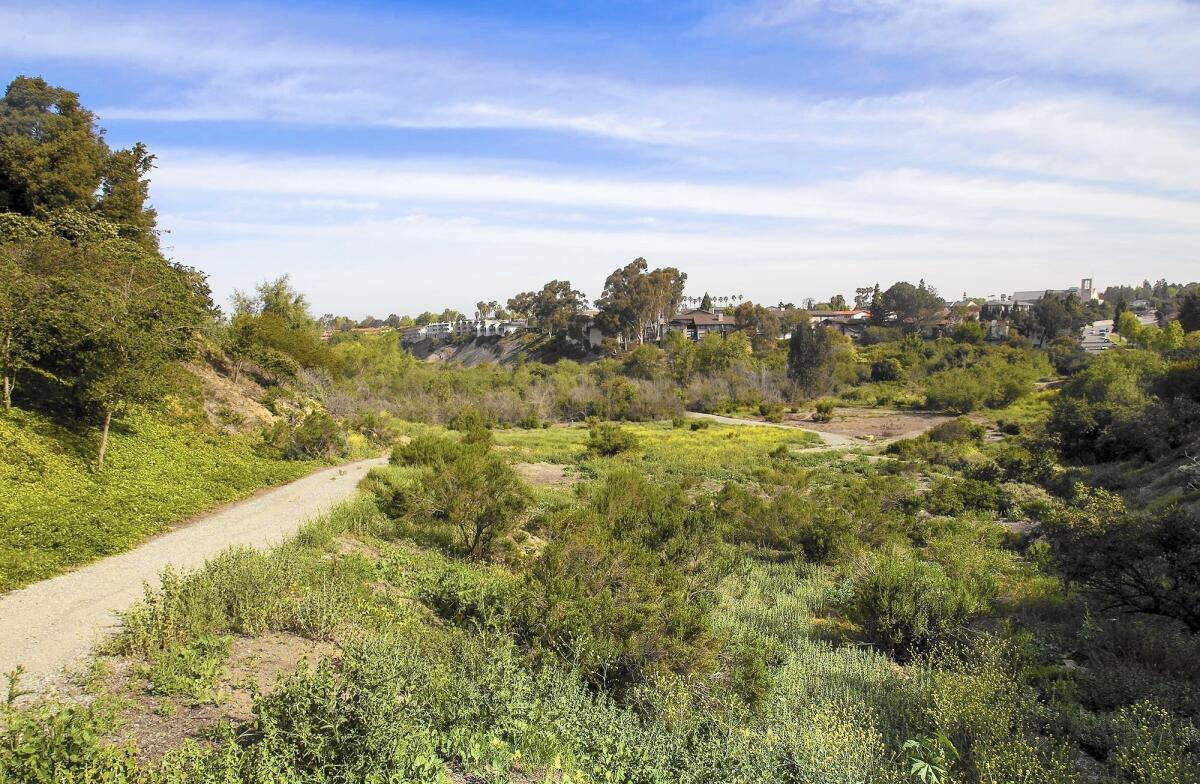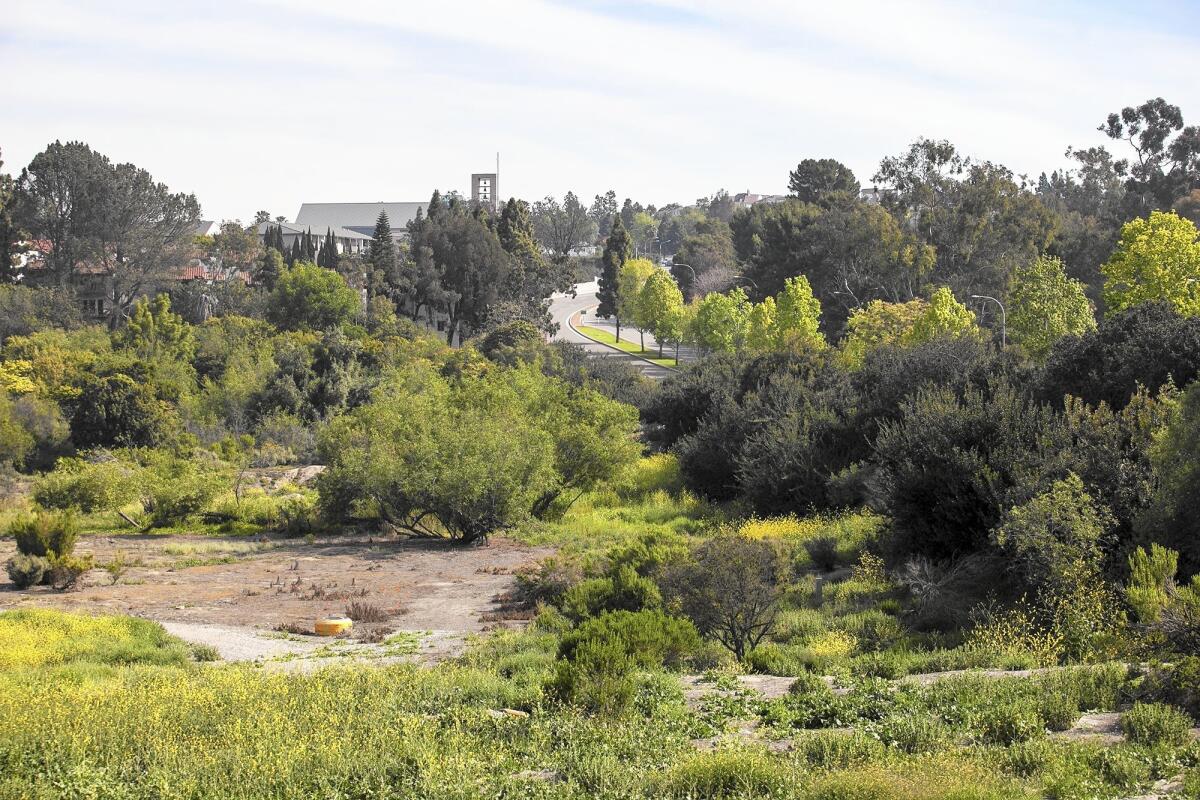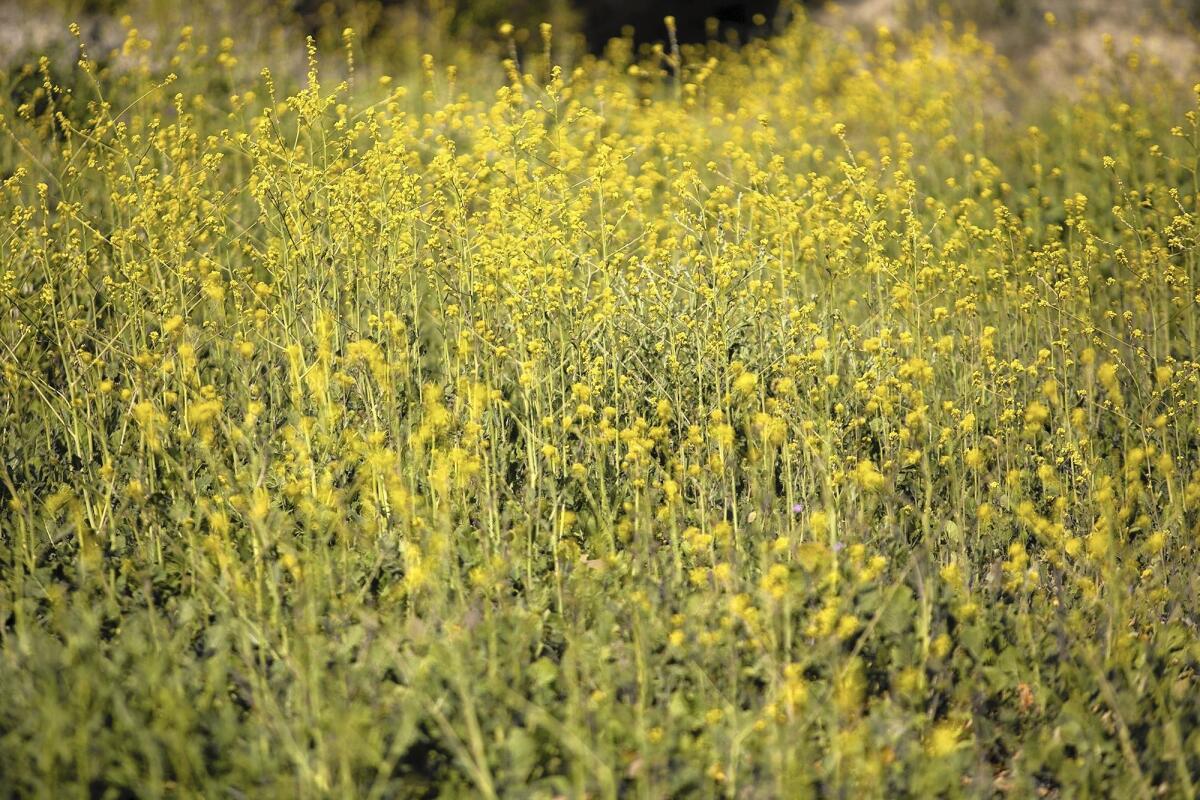Plan for Big Canyon Nature Park ‘facelift’ draws compliments and concerns

- Share via
A plan to restore Big Canyon Nature Park with native plants and improved walking and biking trails is beginning to take shape.
Currently, the area — a roughly 50-acre habitat west of Jamboree Road adjacent to the Back Bay — is an overgrown canyon full of steep unauthorized trails and non-native plants and animals that are choking out native species. Aside from the handful of hikers and joggers who walk the site and the visitors who use the shade under the large Brazilian peppertree forest, the area largely goes unnoticed by most in Newport Beach.
But city officials and local environmentalists who have had their eye on the canyon for more than a decade see potential through the weeds.
“It’s been pretty [degraded] over the years,” said Riley Pratt, an ecologist and project manager with the Irvine Ranch Conservancy. “The project is going to be a real facelift to this whole region.”

The city has been working with the conservancy, which manages the resources in the area, since 2014 on a Resource and Recreation Management Plan for Big Canyon that would be the blueprint of future efforts to improve natural and recreational resources in the city-owned area.
About a dozen Newport Beach residents received an overview of the restoration document, which looks at the types of plants and species currently on the site, as well as how the public uses the area.
One of the biggest issues is that roughly half of the 64 species of plants in the area are not native and are crowding out native plants such as coastal scrub, riparian scrub and wetlands that sustain endangered or threatened animals such as osprey, the coastal gnatcatcher and the yellow-breasted chat, said Ryan Henry, a senior biologist and project manager at environmental consulting firm Dudek.
The plan includes removing the non-native plants and replanting natives. That could take significant effort in certain areas of the canyon, Henry said.

Also, non-native animal species have made a home in the canyon, such as the African clawed frog and American bullfrog, which over time can annihilate an aquatic ecosystem like the bay, according to Henry.
Officials also recommend adding a network of trails that would loop around the reserve, connecting Jamboree Road with Back Bay Drive. That effort, they said, would diminish the need for hikers to cut through areas of the habitat, forming unsafe trails. Officials also are considering installing a hard surface path that would allow bikers from Jamboree to ride through the canyon to Back Bay Drive.
“This plan is really nice,” said Rita Phillips, who frequents the area. “I especially like how the trails are connected. I think it’ll be safe and well-monitored and allow for favorable vegetation.”
A few residents who live nearby worried that a trail proposed for the top of the park near the Eastbluff neighborhood could bring more visitors and noise.
“I’m all for the restoration plans and providing an area for the flora and fauna to flourish, but I’m not in favor of any development in the area,” said resident Penny Wilton. “Why can’t we just have a natural place for habitat without walkers and bikers?”
The restoration, which is expected to cost $7 million to $9 million, would be funded completely through grant money. The project likely would take years to complete, according to Assistant City Engineer Bob Stein.
The City Council is expected to review the plans in May.
The city will offer another overview of the plans at a community meeting at 6 p.m. April 26 at the Newport Beach Central Library, 1000 Avocado Ave.
